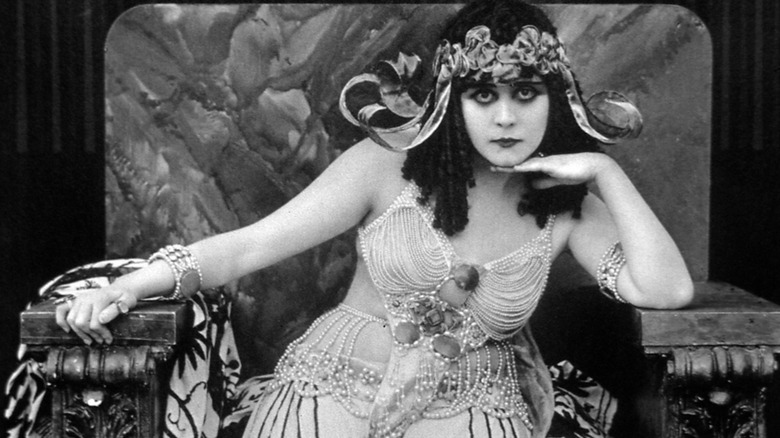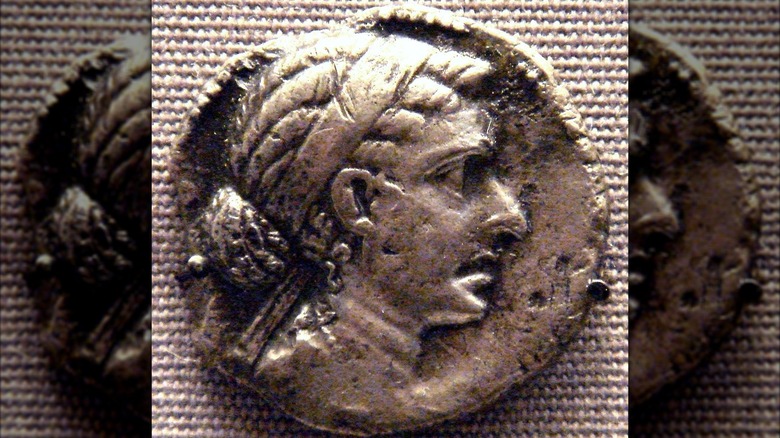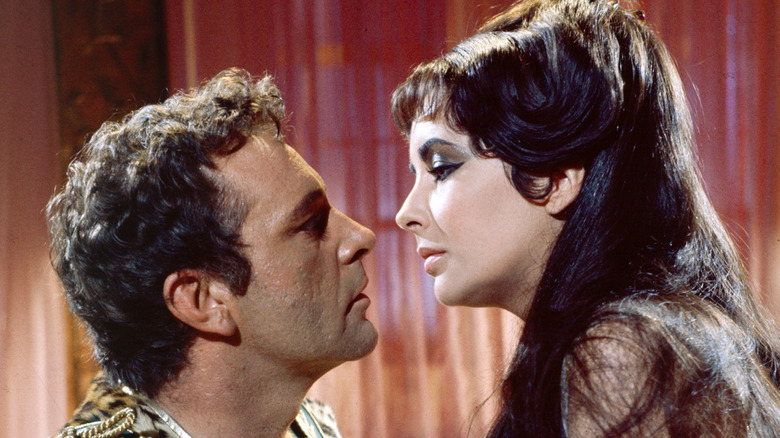Cleopatra Might Have Looked Totally Different Than We Thought
Cleopatra: Even only by itself, the name evokes a downpour of exotic imagery and historical factoids. Queen of Egypt, famously beautiful, fantastically wealthy, love affair with Marc Antony — the Roman general, not Marc Anthony who sang to us that banger '90s ballad, "You Sang to Me." But let's look at each one of those notions. The Marc Antony story has been long-romanticized thanks to Shakespeare's 1607 play, "Antony and Cleopatra." The wealth thing? Well, she was Pharoah, so yeah. Plus there's that story about her dissolving the largest pearl in the world into a cup of vinegar just to make a point. And her beauty? That's the most mythical part of her story.
It's often envisioned that Cleopatra was over-the-moon gorgeous, no doubt cemented by Elizabeth Taylor's 1963 portrayal of her. In the historical record, however, Cleopatra looks quite different. See, there were no camera phones in the 1st century B.C.E. when Cleopatra reigned over the Ptolemaic Kingdon of Egypt, so folks had to rely on tried-and-true portrait mainstay to know what their ruler looked like: coins. Also statues, to a lesser extent.
Looking to those coins and statues, well, let's just say money can make up for a lot. We're not quite talking bog hag territory, but it's safe to say that reports of Cleopatra's beauty have taken on exaggerated proportions over time. A 2007-discovered cachet of coins — not the first of their type, by far — reminded folks that Cleopatra had a weak chin, hooked nose, sneering mouth, and overly homely appearance. Them's the facts.
Cleopatra wasn't all that pretty
Ahem, and we quote: "For her actual beauty, it is said, was not in itself so remarkable that none could be compared with her, or that no one could see her without being struck by it, but the contact of her presence, if you lived with her, was irresistible; the attraction of her person, joining with the charm of her conversation, and the character that attended all she said or did, was something bewitching." That description of Cleopatra comes to us via 1st-century C.E. Greek historian and philosopher, Plutarch, per Binghamton University. That's basically an ancient version of, "She's not that pretty, bro, but trust us, she's got a great personality." And indeed, all accounts indicate that Cleopatra really was a shrewd, highly-educated, articulate conversationalist who wove the power of her near-death, Rome-sanctioned kingdom as best as possible.
But pretty, like many envision? Busts of Cleopatra come across as more flattering than her portrait on coins, it's true. But, those coins have a wide degree of variance when it comes to facial features. There's also no guarantee in either case that minters or sculptors ever saw their subject directly. But even so, the coins share enough similarities to confirm Cleopatra's basic appearance.
Also, and pointedly: Cleopatra's Macedonian Greek dynasty didn't marry outside of the family. Cleopatra didn't wind up like those ponderously chinned Hapsburgs of Hapsburg chin fame, but she faced a similar genetic fate. But hey, at least she had kids outside of the family with folks like Julius Caesar and Marc Antony.
The origins of the beautiful vixen version
So, where oh where did our misconception of Cleopatra's appearance come from? Of course, 20th-century visual media play a role, from Elizabeth Taylor in 1963 right back to silent actress Theda Bara's 1917 portrayal of the Pharoah. Before that, we've got loads of depictions of Cleopatra since the 16th century, mostly paintings. She looks different in each portrayal, and oftentimes her appearance and even dress conform to the standards of the painter's time rather than those of 1st-century B.C.E. Egypt. But in no depiction is Cleopatra patently ugly. Because let's be honest: What else would the artist assume is likely to please the public?
Also, there's the whole "sultry vixen power-through-sex" fantasy that suits modernity's preferences and preoccupations very, very well. Middle East Eye points at Greek historian and philosopher Plutarch for kickstarting this depiction, which also informs how Cleopatra is physically portrayed. Plutarch, writing for a Roman audience, emphasized Cleopatra's manipulation of Marc Antony and Julius Caesar. Shakespeare then took Plutarch's writing and wrote it into a crowd-pleasing 1607 play about swooning lovers, "Antony and Cleopatra."
Beyond those basic facts, it's a bit of a stretch to draw a straight line from Plutarch to 2025 and lay the false belief in Cleopatra's beauty squarely at Plutarch's feet — not in an internet age where all knowledge is available 24/7. Views of the past invariably retain the color of the present, and it's especially hard to see grand figures like Cleopatra clearly. That's why it's a good thing we've got those coins to keep things straight.


